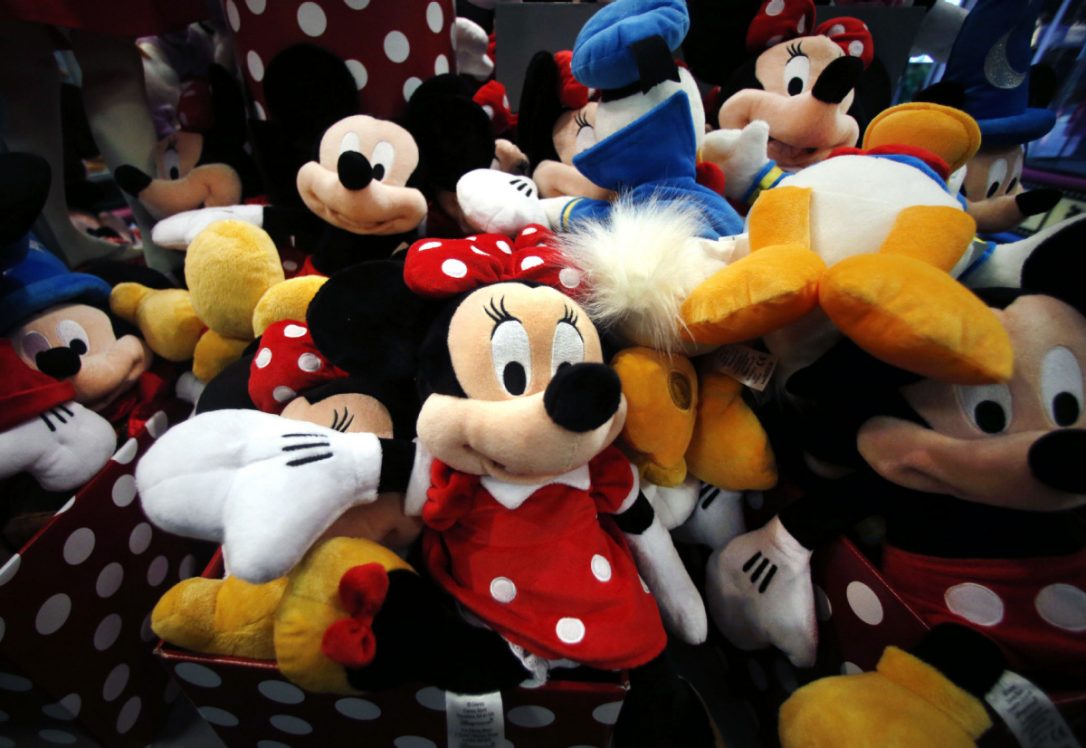Disney in Hot Seat Over ESPN’s Losing Streak

ESPN was once considered the crown jewel of Walt Disney Co., the gem in a TV line-up that generated more than 70 per cent of the company’s annual operating profit.
Now the sports network is headed for a second straight year of falling profit, according to RBC Capital Markets analyst Steven Cahall, and has almost single-handedly delivered the worst annual result for Disney’s stock in five years. Cahall, cable billionaire John Malone and others are suggesting Disney consider divesting ESPN.
“If I had to guess, what you will see is a split of Disney with ESPN spun off,” Malone said on CNBC last month. “Probably, ESPN could be owned and protected by a distributor in the U.S.”
Problems at the world’s most-watched sports network reflect the same forces driving the current spell of merger mania: falling viewership and competition from low-cost internet services like Netflix Inc. and Sling TV.
Those pressures drove Time Warner Inc. into the arms of AT&T Inc. for more than $85 billion (U.S.) and explain why Disney chief executive officer Robert Iger is looking for technology acquisitions and new ways to deliver ESPN to the public.
“There’s some really interesting opportunities, given what’s going on from a technological perspective, to both improve our businesses and also improve the consumer experience by selling directly to consumers,” Iger said on a November call, just days after AT&T announced its Time Warner deal. “And we’re considering and exploring various ways to accomplish this.”
Recent deals in media are blurring the lines between content creators and distributors. In the current digital age, with phone companies offering TV service and tech giants such as Amazon.com Inc. streaming sitcoms around the world, the opportunity to poach customers has never been greater.
With Time Warner, the parent of Warner Bros. and HBO, AT&T is gaining control of one of the world’s largest movie and TV studios, as well as a top cable TV programmer. AT&T is the largest U.S. pay-TV provider through its ownership of DirecTV. Last week, Rupert Murdoch’s 21st Century Fox Inc. said it will pay $14.6 billion for the rest of the U.K.’s Sky Plc, creating what the company called “a global creative and consumer powerhouse.”
ESPN has a lot at risk in this environment. The network takes in an industry-leading $7.21 a month for each of its 90 million or so pay-TV subscribers. That’s four times what its nearest competitor, Time Warner’s TNT, fetches at $1.82, according to data from SNL Kagan.
Iger knows he’s got to ensure his programming has a home in this shifting landscape. He’s charting a course to put the sports network on new distribution platforms and launch his own direct-to-consumer services.
“We just generally feel bullish about ESPN’s future,” Iger said on the call.
Disney shares rose 1.4 percent to $105.36 at 9:34 a.m. in New York on the heels of a successful opening weekend for its latest “Star Wars” film, Rogue One. The company’s movie studio division has been a bright spot all year, leading the industry in market share and delivering record profit. Even with Monday’s gain, the stock is up less than 1 per cent for the year.
Acquisitions could be an integral part of Disney’s strategy. The company has looked at Twitter Inc., people with knowledge of the matter said in September, and in August agreed to plunk down $1 billion for one-third of BAMTech, the streaming arm of Major League Baseball, which powers Disney’s Watch ESPN app as well as online programming for HBO. The company has also been mentioned as a possible suitor for Netflix Inc.
Not everyone thinks Disney needs to do a big deal—or needs to tie up with a major content distributor.
“Netflix is doing great, but what’s altogether different about them and say what Amazon might offer?” asked Tony Scherrer, director of research at Seattle’s Smead Capital Management, which owns almost 728,000 Disney shares. “Disney doesn’t need a distributor as much as the distributors need Disney’s assets.”
ESPN’s central problem is that costs are rising fast as traditional pay-TV audiences shrink and viewer ratings for marquee sports like football decline. ESPN’s revenue is expected to rise 4 per cent to $12.5 billion this fiscal year after showing no growth in 2016, according to RBC. Sports costs will rise 17 per cent to $6.7 billion, due largely to a $600 million increase in ESPN’s contract with the National Basketball Association.
In the past three years, ESPN’s U.S. subscriber base has shrunk to 90 million from 99 million, according to Nielsen, whose TV ratings help set advertising rates. The number, the lowest since 2005, reflects customers cancelling traditional pay-TV packages, older customers dying off and younger ones not signing up like their parents.
To his credit, Iger was among the first to put his channels on Dish Network Corp.’s Sling TV and he’s since gotten ESPN and other networks on low-cost packages like AT&T’s DirectTV Now —even though those audiences aren’t yet counted by Nielsen. Disney also owns 30 per cent of Hulu, the streaming service that’s poised to introduce an online package of cable networks.
Yet the lower-cost pay-TV packages may not replace lost cable revenue.
So Iger is also looking for incremental growth. Next year, Disney will launch a subscription-based online version of ESPN, with content not available on TV. The service will let Disney charge viewers for a specific sport, season or even one weekend, Iger said in September.
Analysts including Doug Mitchelson of UBS Group AG and RBC’s Cahall predict Disney’s media networks will resume their profit growth in fiscal 2018.
But others, such as analyst Rich Greenfield of BTIG LLC, sense Iger wants to do a big deal, whether it’s with Twitter, Netflix or someone else.
“Maybe Iger and Disney are simply trying to signal confidence in ESPN in hopes of getting their stock up as they plan to make a major acquisition,” Greenfield said in a report last month. “Hard to remember a time in history when Disney has talked so openly about not being strategically complete.”
The challenge for Iger will be to position Disney for the future while protecting a model that has served shareholders well over the years.
“Iger has a done a fantastic job, in distribution and content in certain parts of the world,” said Mario Gabelli, a longtime media investor and owner of Disney stock. “He’s got TV networks, amusement parks, ships on the sea. He’s got Moana travelling around the world.”








